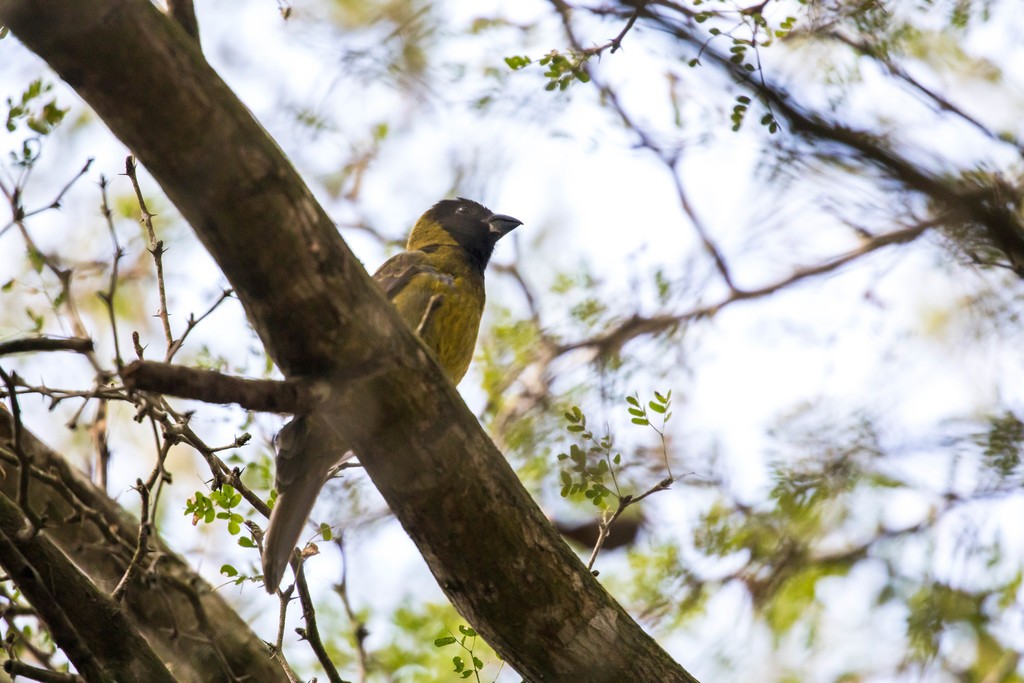Crimson-collared Grosbeak
A species of Crimson-collared Grosbeaks Scientific name : Rhodothraupis celaeno Genus : Crimson-collared Grosbeaks
Crimson-collared Grosbeak, A species of Crimson-collared Grosbeaks
Botanical name: Rhodothraupis celaeno
Genus: Crimson-collared Grosbeaks
Content
Description General Info
Description
The crimson-collared grosbeak (Rhodothraupis celaeno) is a medium-size seed- and leaf-eating bird in the same family as the northern cardinal, Cardinalidae. The crimson-collared grosbeak is primarily found in north-eastern Mexico from central Nuevo León and central Tamaulipas south to northern Veracruz; however, it occasionally strays into the Rio Grande Valley of southern Texas, mostly in winter. This bird is 20.2-23.5 cm (8.0-9.25 inches) in length. It probably weighs about 60 grams (2.1 ounces), but it is unknown. Mature males have black plumage with a dull red (Sibley 2000) or pinkish red (Howell and Webb 1995) "collar" on the nape, shoulders, and belly (much like the crimson-collared tanager); the belly is mottled with black. Mature females have a black head and breast like males but greenish upperparts and yellowish underparts. Young birds are similar to females but have less black. The beak is black, big and stubby, with the upper mandible jutting roughly perpendicular to the forehead. The song is a warble, often slurred upward at the end. Calls are penetrating whistles starting with an "s" sound, slurred downward or one upward followed by one downward. The crimson-collared grosbeak inhabits humid or semi-arid forest and second growth, from low to high levels, sometimes skulking on the ground. It occurs singly, in pairs, or in mixed-species flocks. The nest is a bulky cup made of grass and twigs and placed in a bush. The female lays two or three pale blue-grey eggs with brown markings. 
Size
22 cm (8.5 in)
Nest Placement
Shrub
Feeding Habits
Crimson-collared Grosbeak predominantly eats leaves, complemented by a diet of insects and fruits. This species forages mostly in trees, skillfully using its stout bill to glean food. It showcases a preference for certain plants’ foliage, exhibiting specialized feeding adaptations.
Habitat
The crimson-collared Grosbeak commonly inhabits humid to semi-arid brushy woodlands and forest edges, which often include areas of secondary growth. It can also be found in agricultural landscapes, such as citrus groves, and in regions populated by sweet gum trees (Liquidambar). This species typically resides at altitudes ranging from sea level up to approximately 1200 meters in broader tropical and subtropical zones.
Dite type
Frugivorous
General Info
Feeding Habits
Bird food type

Fruit
Bird Feeder Type

Platform
Scientific Classification
Phylum
Chordates Class
Birds Order
Perching birds Family
Cardinals Species
Crimson-collared Grosbeak 